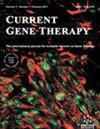Evolution of Prime Editing Systems: Move Forward to the Treatment of Hereditary Diseases
IF 3.3
4区 医学
Q2 GENETICS & HEREDITY
引用次数: 0
Abstract
: The development of gene therapy using genome editing tools recently became relevant. With the invention of programmable nucleases, it became possible to treat hereditary diseases due to introducing targeted double strand break in the genome followed by homology directed repair (HDR) or non-homologous end-joining (NHEJ) reparation. CRISPR-Cas9 is more efficient and easier to use in comparison with other programmable nucleases. To improve the efficiency and safety of this gene editing tool, various modifications CRISPR-Cas9 basis were created in recent years, such as prime editing – in this system, Cas9 nickase is fused with reverse transcriptase and guide RNA, which contains a desired correction. Prime editing demonstrates equal or higher correction efficiency as HDR-mediated editing and much less off-target effect due to inducing nick. There are several studies in which prime editing is used to correct mutations in which researchers reported little or no evidence of off-target effects. The system can also be used to functionally characterize disease variants. However, prime editing still has several limitations that could be further improved. The effectiveness of the method is not yet high enough to apply it in clinical trials. Delivery of prime editors is also a big challenge due to their size. In the present article, we observe the development of the platform, and discuss the candidate proteins for efficiency enhancing, main delivery methods and current applications of prime editing.基因编辑系统的演变:向治疗遗传性疾病迈进
:利用基因组编辑工具进行基因治疗的发展近来变得十分重要。随着可编程核酸酶的发明,通过在基因组中引入靶向双链断裂,然后进行同源定向修复(HDR)或非同源末端连接(NHEJ)修复,治疗遗传性疾病成为可能。与其他可编程核酸酶相比,CRISPR-Cas9 更高效、更易用。为了提高这种基因编辑工具的效率和安全性,近年来出现了各种基于CRISPR-Cas9的改良方法,如质粒编辑--在这种系统中,Cas9缺口酶与反转录酶和含有所需校正的引导RNA融合。质粒编辑与 HDR 介导的编辑具有相同或更高的校正效率,而且由于诱导缺口而产生的脱靶效应要小得多。有几项研究使用质粒编辑来校正突变,研究人员报告称几乎没有证据表明存在脱靶效应。该系统还可用于确定疾病变异的功能特征。不过,质粒编辑仍有一些局限性,有待进一步改进。该方法的有效性还不足以将其应用于临床试验。由于质粒编辑器体积庞大,其输送也是一个巨大的挑战。在本文中,我们观察了该平台的发展,并讨论了提高效率的候选蛋白质、主要的传递方法和当前的素编辑应用。
本文章由计算机程序翻译,如有差异,请以英文原文为准。
求助全文
约1分钟内获得全文
求助全文
来源期刊

Current gene therapy
医学-遗传学
CiteScore
6.70
自引率
2.80%
发文量
46
期刊介绍:
Current Gene Therapy is a bi-monthly peer-reviewed journal aimed at academic and industrial scientists with an interest in major topics concerning basic research and clinical applications of gene and cell therapy of diseases. Cell therapy manuscripts can also include application in diseases when cells have been genetically modified. Current Gene Therapy publishes full-length/mini reviews and original research on the latest developments in gene transfer and gene expression analysis, vector development, cellular genetic engineering, animal models and human clinical applications of gene and cell therapy for the treatment of diseases.
Current Gene Therapy publishes reviews and original research containing experimental data on gene and cell therapy. The journal also includes manuscripts on technological advances, ethical and regulatory considerations of gene and cell therapy. Reviews should provide the reader with a comprehensive assessment of any area of experimental biology applied to molecular medicine that is not only of significance within a particular field of gene therapy and cell therapy but also of interest to investigators in other fields. Authors are encouraged to provide their own assessment and vision for future advances. Reviews are also welcome on late breaking discoveries on which substantial literature has not yet been amassed. Such reviews provide a forum for sharply focused topics of recent experimental investigations in gene therapy primarily to make these results accessible to both clinical and basic researchers. Manuscripts containing experimental data should be original data, not previously published.
 求助内容:
求助内容: 应助结果提醒方式:
应助结果提醒方式:


